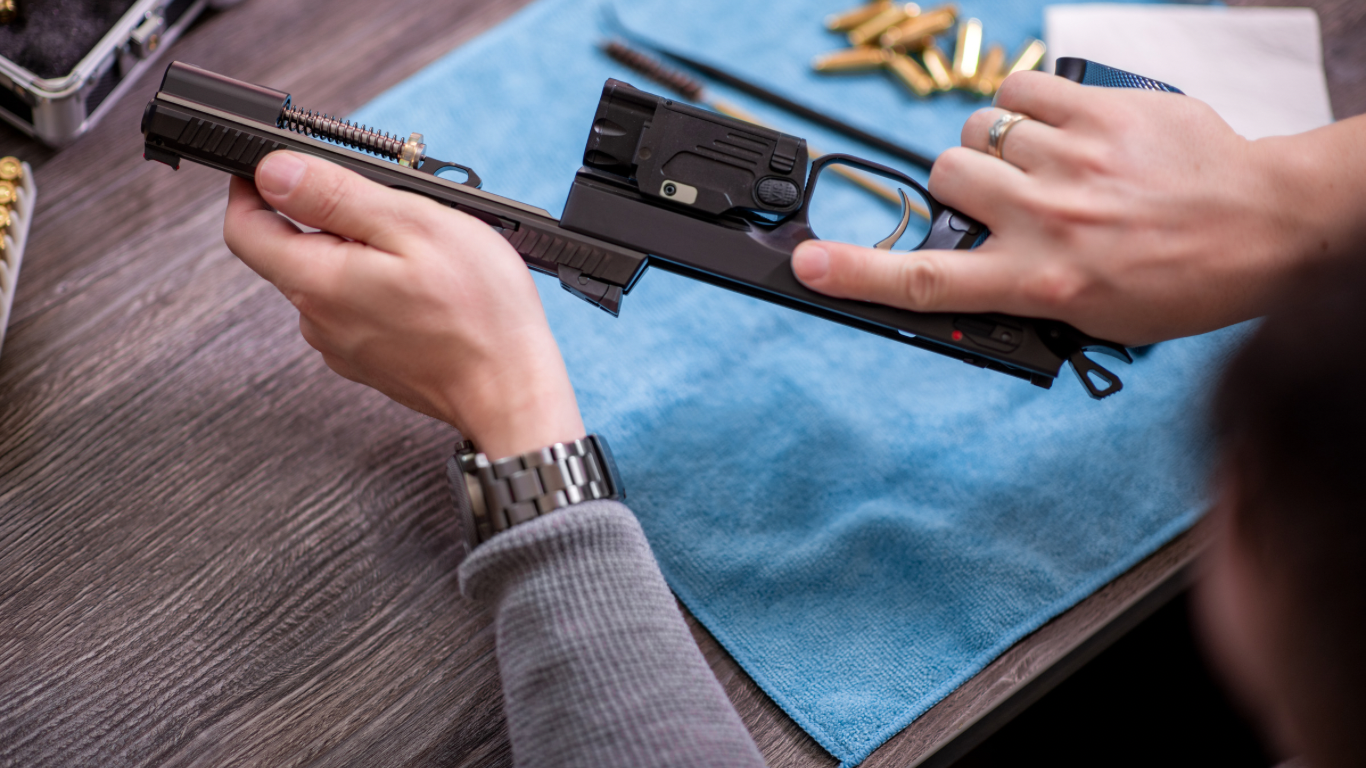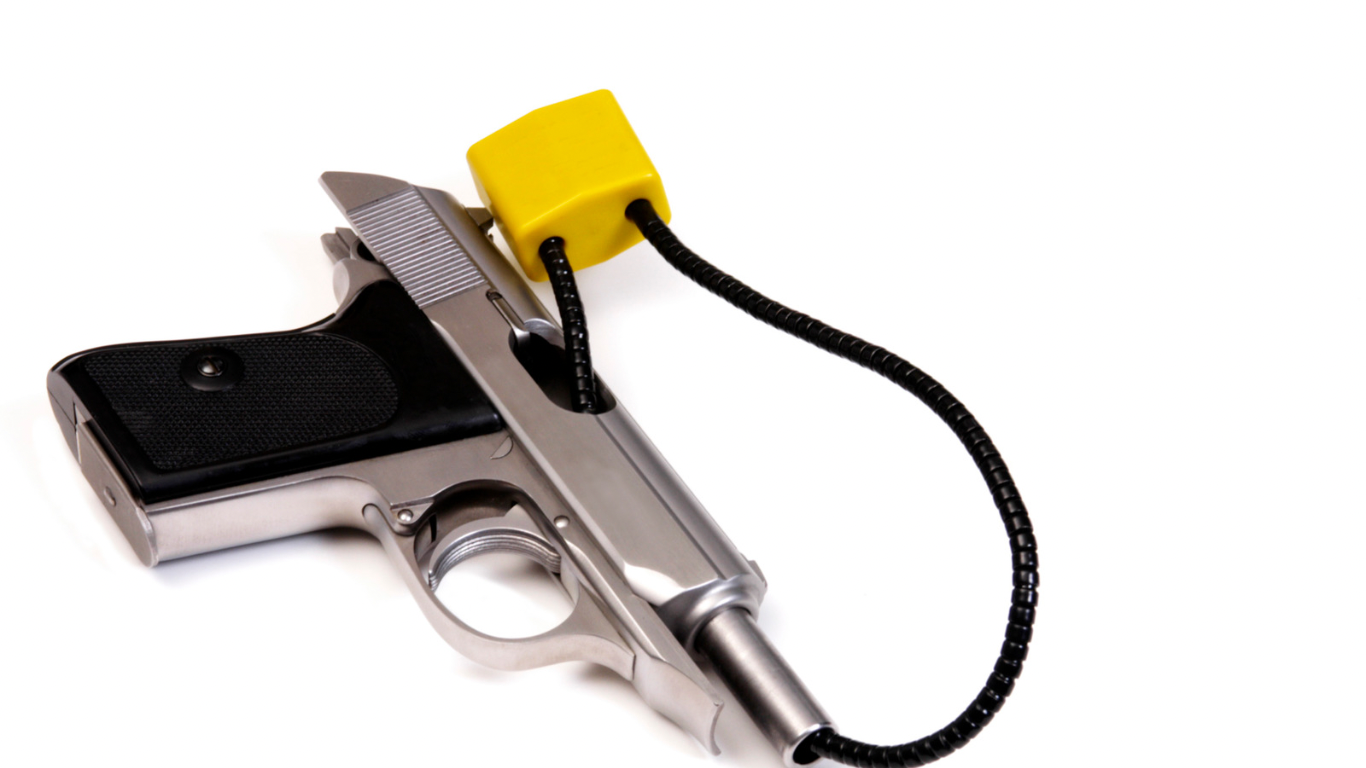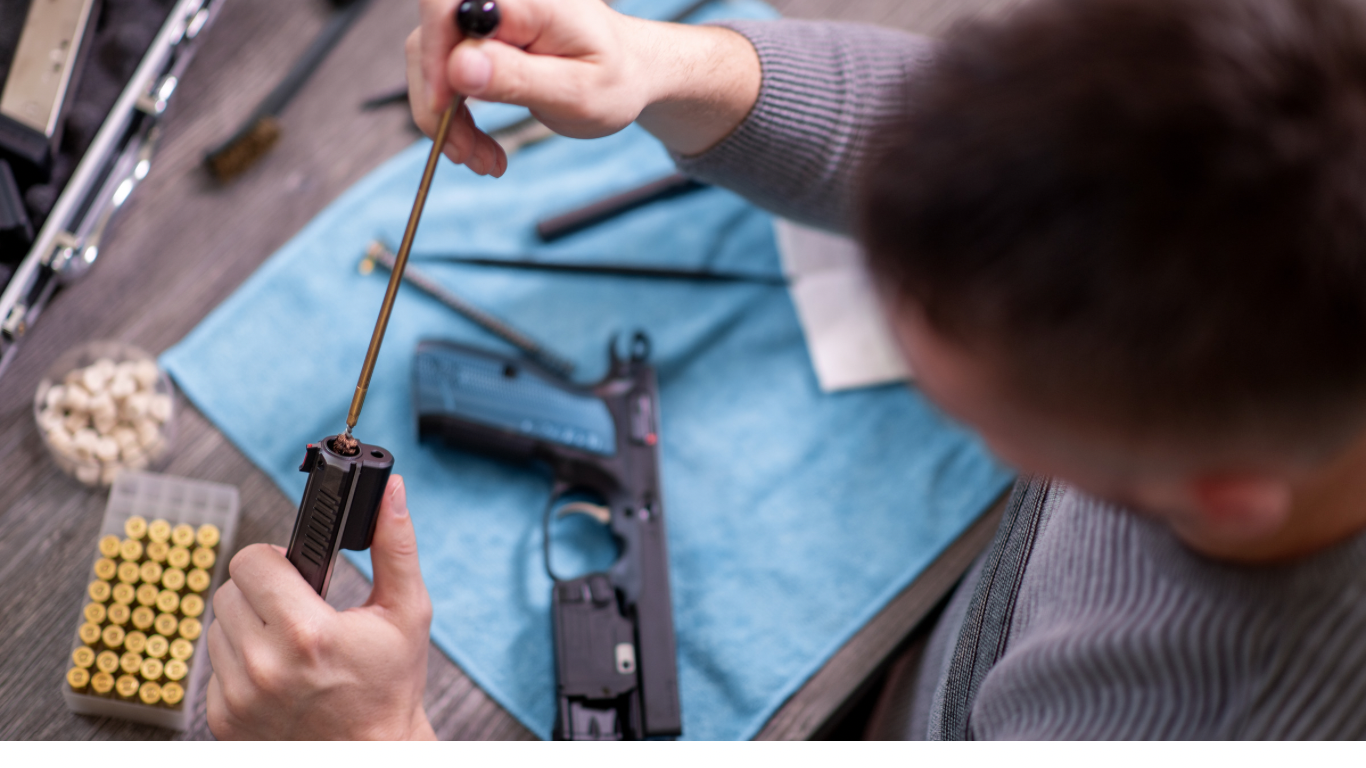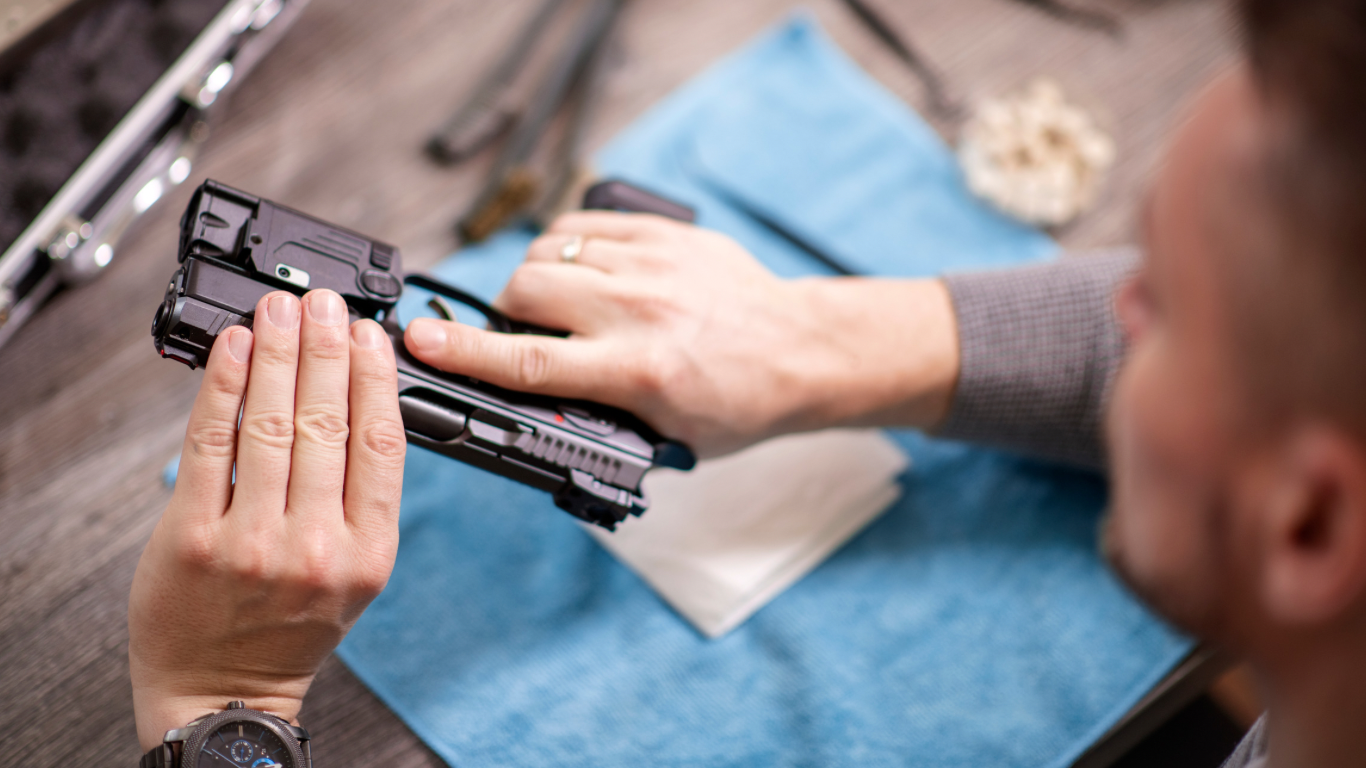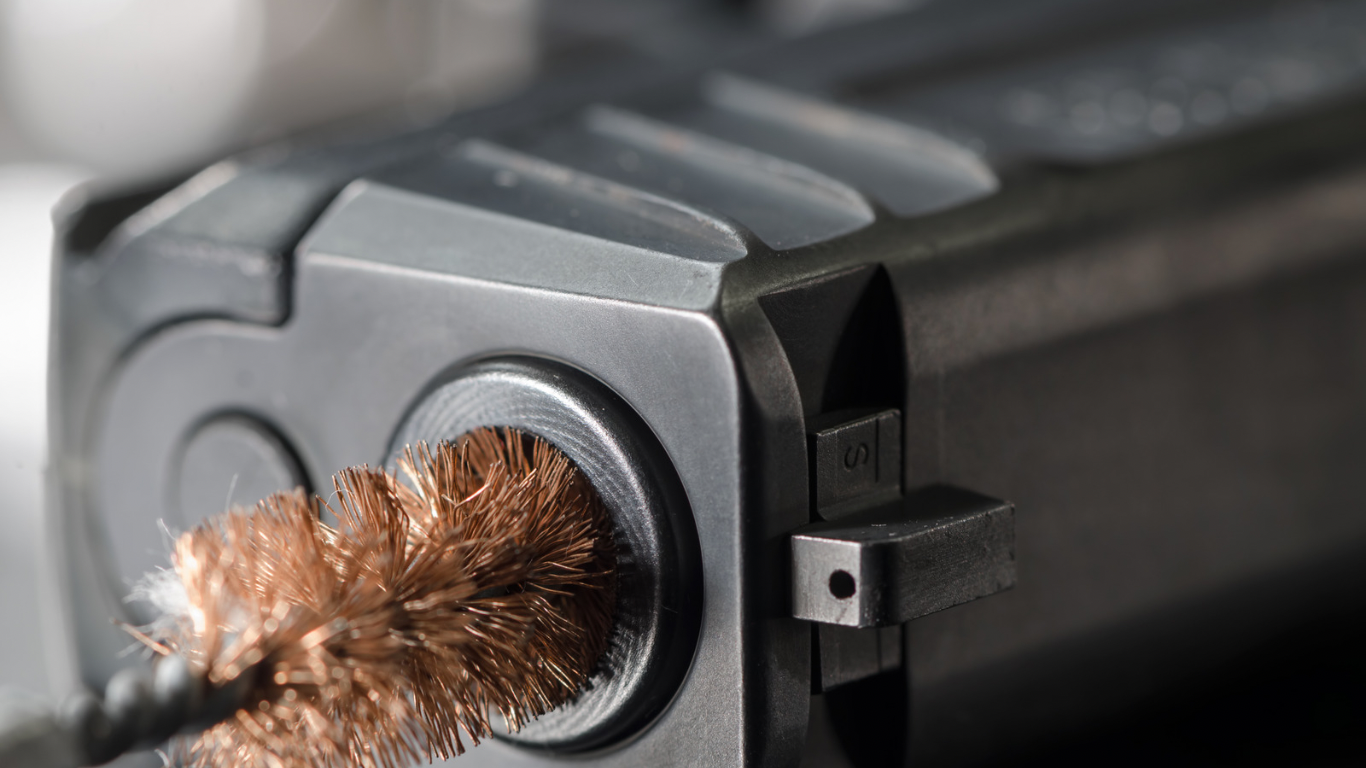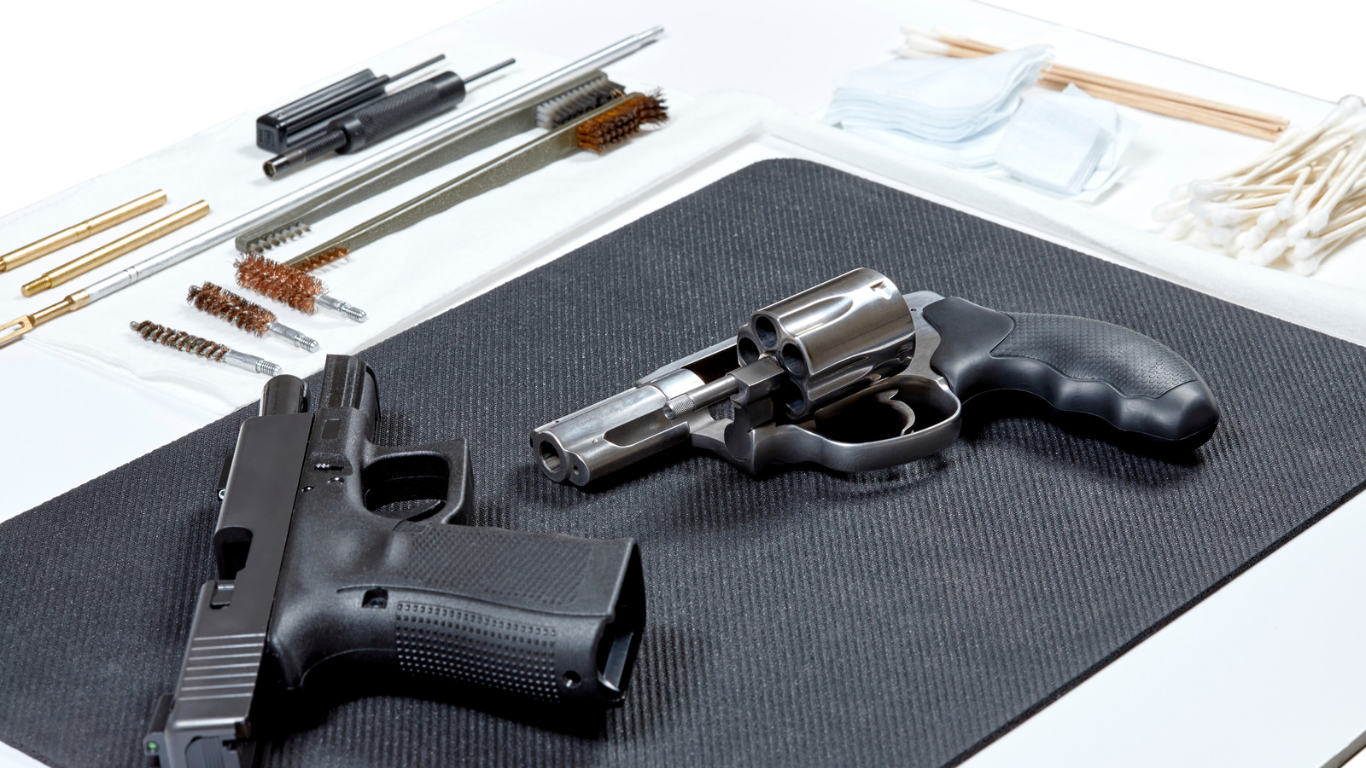Gun ownership comes with great responsibility, as you must ensure that your firearm is in top condition at all times. Regular maintenance is crucial not just for optimal performance but also for ensuring your safety and the safety of those around you. In this guide, we’ll explore the essential gun maintenance schedule to keep your firearm in excellent shape.
Cleaning
The Key to a Reliable Firearm Cleaning your firearm properly is the most significant part of gun maintenance. The frequency of cleaning depends on how often you use your gun, but generally, you should clean it after every range session or every couple of months if you don’t shoot regularly. To clean your gun, you’ll need a cleaning kit, a cleaning rod, bore brushes, cleaning solvents, and lubricants. Begin by unloading your gun and disassembling it, then clean the barrel with a bore brush and solvent, followed by wiping the rest of the gun with a soft cloth. After cleaning, lubricate the moving parts with oil or grease to protect them from wear and tear.
Inspection
Checking for Any Damage or Wear Regular inspection is also crucial to ensure that your firearm is in top shape, even if you haven’t used it recently. Check for any visible signs of damage or wear, like dents, cracks, or chips, on the metal and wooden parts of your gun. Inspect the barrel and the chamber for any obstructions or rust. Make sure that the sights are aligned correctly. Check the magazines and ammunition for any signs of damage, dents, or corrosion. If you discover any defects, address them promptly to prevent them from causing more significant issues in the future.
Lubrication
Making Sure that the Moving Parts Are Smooth Lubrication is critical to keep your gun’s moving parts smooth and prevent wear and tear. Use a quality lubricant to protect the internal parts of your firearm from rust and friction. Be careful not to over-lubricate, as this can attract dirt and dust, causing your gun to malfunction. Apply lubricant sparingly to the gun’s moving parts, such as the slide, bolt, hammer, and trigger.
Replacement
Knowing When to Replace Parts Even with regular maintenance, some gun parts will need to be replaced from time to time. The frequency of replacement depends on how often you use your firearm and the quality of the parts. The most common parts that need replacement are the springs, particularly the recoil spring, which wears out after frequent firing. Other parts that may need replacing include the extractor, firing pin, and recoil buffer. Consult with a professional gunsmith or the manufacturer’s manual to determine when and how to replace parts.
Safe Storage
Keeping Your Firearm Secure and Protected Proper storage is as essential as maintenance. Unsecured firearms can be a danger to children and other family members or fall into the wrong hands. Make sure that your gun is stored in a secure, locking container, such as a gun safe, cabinet, or lockbox. Keep your ammunition separated from your firearm in a different location. Make sure that your gun is unloaded and that the safety mechanism is engaged.
Conclusion
Gun maintenance may seem daunting at first, but it’s a critical aspect of responsible gun ownership. Regular cleaning, inspection, lubrication, replacement, and safe storage will help keep your firearm in top condition, ensuring its reliability, safety, and longevity. Follow the essential gun maintenance schedule that we’ve outlined to keep your firearm in excellent shape and give you peace of mind every time you shoot. As a responsible gun owner, it’s up to you to maintain your firearm and keep it safe and reliable.
